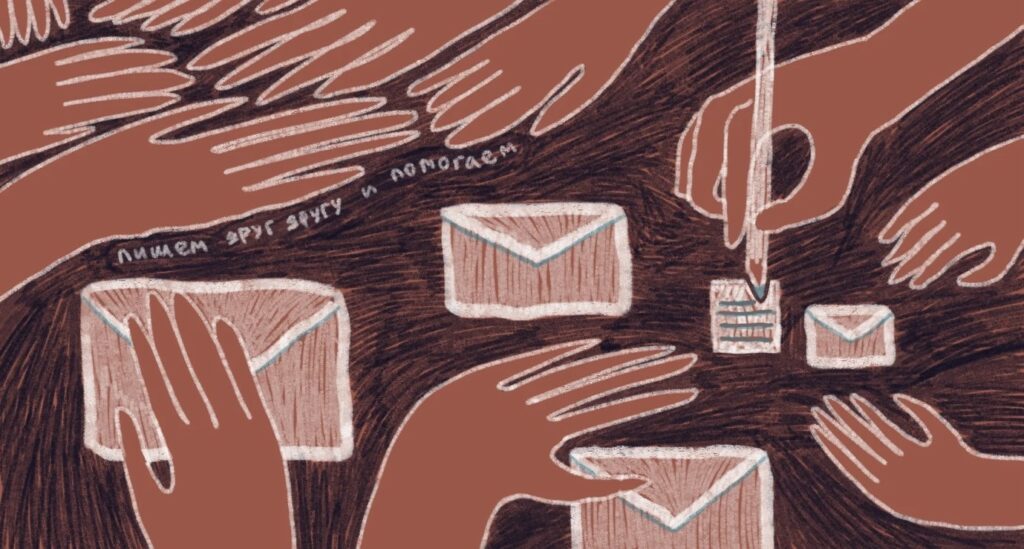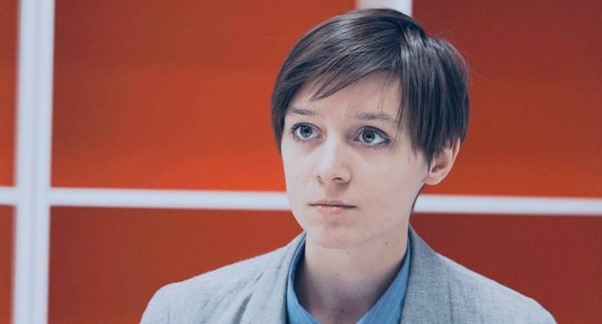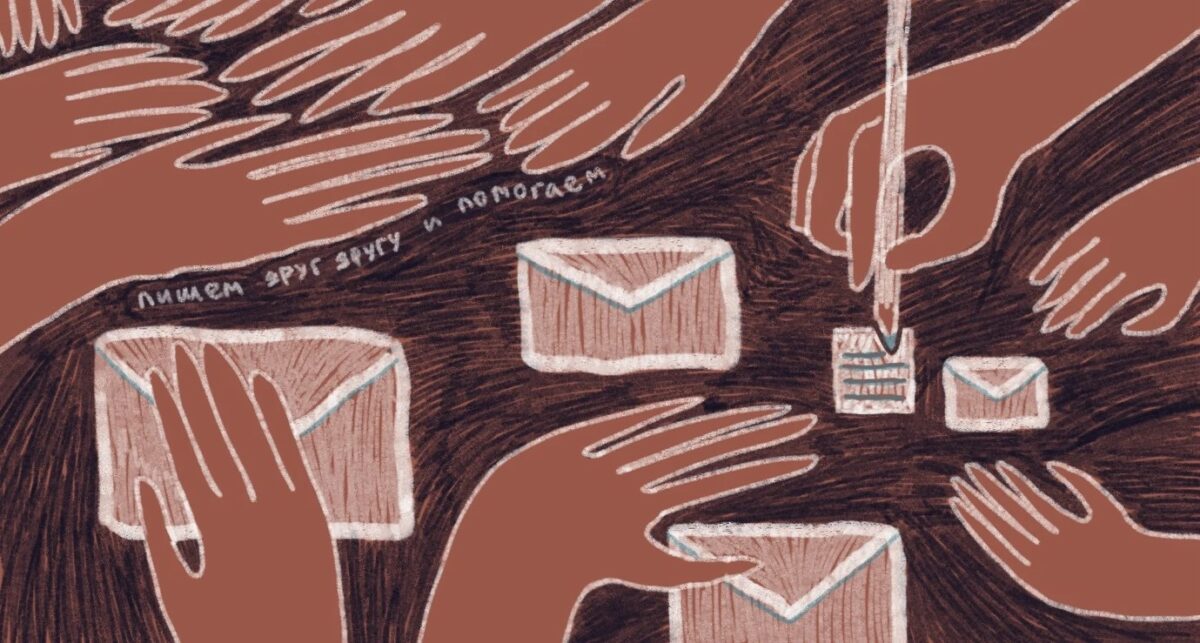Note from LeftEast Editors: This article was originally published in Russian by the DOXA Journal. It was translated from the Russian by Michael Baker and edited by Arina Gundyreva.
Today, queer people in Russia are forced to oppose systematic discrimination, occasionally even forcing them into emigration. In the USSR however, with closed borders and absolutely no discussion of queer existence, queer people’s strategies of resistance were more subtle. We spoke to 32 queer people who grew up in the USSR in the 1970s and 1980s to learn about their childhood, entering school and university, and getting their first jobs, all while experiencing marginalization.

In the Soviet Union, behaviour that differed from generally accepted mores was considered deviant, and viewed harshly by both the public and the state. This “deviance” didn’t suddenly materialise of its own accord: it was created and reproduced by the Soviet government. As the political elite had complete control of public discourse, they could do more than just dictate which groups were to be pushed to the margins; they could also instil the masses with these opinions. A particular status was reserved for so-called “sexual-gender dissidents” – queer people, whose position as “excluded” subjects was founded on the control and suppression of their desires (1).
Historical survey
After the fall of the monarchy in 1917 the tsarist legal system was reformed and some parts of it were removed. Article 995, delineating the punishment of consensual same-sex contact between men was no longer enforceable by law (2). Soon after came a period of relative freedom regarding the representation and discussion of homosexual and transgender people. However, by 1934, a new article proposed the introduction of criminal punishment for mutually consensual sexual contact between men. This article later appeared in the criminal code of several Soviet republics. During the Khrushchev reforms of the socialist legal system (3), the article was kept under number 121 of the criminal code (4). Each year, over 800 people were imprisoned using this law, and in total over 38,000 men were sentenced during the article’s 60 years of validity (5).
The Soviet leadership saw non-heterosexual persons as political enemies, even class enemies. This much is illustrated by the changes in the definition of the term gomoseksualizm (‘homosexualism’) in the Great Soviet Encyclopaedia before and after the introduction of the new legal article. In the 1930 edition we are told that, unlike in bourgeois countries, there is no prosecution for same-sex contact in the Soviet Union. In the Encyclopaedia’s next edition this formulation was ‘corrected’, and “homosexualism” became “shameful and criminal”, as well as “revealing the decay of the ruling classes”. Soviet society as a whole shared the distaste that the state expressed from above, as is made clear in Levada Centre’s 1989 survey (6): 33.7% of people asked supported the “liquidation” of homosexuals, while 30.7% supported socially isolating them.
Forming queer communities
Queer people in the USSR found themselves in a complex and somewhat confusing situation: homosexual and bisexual men were at risk of legal persecution; women were under the pressure of heightened anxiety and pervasive heteronormative standards (7); and transgender people were completely unable to freely express their gender identity. None of these people had many sources of information on sexuality and gender, and contemporary discourse pathologized and criminalised their identity, imposing ‘deviance’ upon them and putting Foucault’s ‘power-knowledge’ into practice (8).
But this discriminatory environment also became a space in which queer individuals created their own practices of exchange, resistance and survival. They used their actions in this way as a means of undermining the existing structures of gender and sexuality, at a time when the state did not allow any legal display of non-normativity. In the 1970s and 1980s, the large cities of Soviet Russia were home to a queer subculture that appeared in pleshkas (9), in LGBT press, and in the activities of the first LGBT organisations.
In most cases, queer people connected with one another via ‘gaydar’ (10): “I was watching him, we chatted, there were people around. I looked at him and understood that he was like me. And he understood the same” (cisgender man, b. 1973, Irkutsk). Those who were lucky enough to live in a big city and meet the “right” people could become part of a local community. This community functioned as a hidden underground network, which was by no means easy to access: “You couldn’t just open the door and enter, you had to find a lot of keys for a lot of different doors…” (cisgender man, b. 1973).
Queer people strove to create personal “micro-communities” despite the increased risk of being ‘outed’ and suffering the consequences, such as being expelled from university. Respondents spoke extremely rarely of any discriminatory acts from staff at various educational institutions, but some isolated cases indicate the presence of a negative broader environment. For example, during his studies at MGU one respondent worried about his potential expulsion “for homosexuality”. On one occasion, he walked in on two friends having sex in their accommodation building, and decide to keep them safe –– he stood at their door ‘on guard duty’: “they were scared, of course, I wasn’t going to tell anyone, I’m sure you understand. That’s their personal life, it shouldn’t reflect on their studies, but at the same time they could absolutely have been expelled from MSU for such a triviality” (cisgender man, b. 1968, Moscow).
In critical situations the community helped resolve urgent problems such as saving people from criminal prosecution. This constructed community had no territorial boundaries –– people from the most distant of cities were tightly connected: “gays are gays everywhere, we don’t have borders. I travelled to Vilnius, Tashkent, Dushanbe. I traversed practically the entire [Soviet] Union –– but I [only] socialised with blues (11) […] I knew that a blue could find help anywhere.”
At that time, the queer community often socialised with the help of telephone calls and letters. People felt protected talking to one another through this kind of ‘social network’: they didn’t invent any codes, they tried to write unreservedly, and even gave their real addresses and personal information. This is how one female respondent describes her experiences: “I had to go to the post office and ask whether there were any letters for a particular address (на какой-то номер документа). There was a whole box there […] the operator looked through it […] and gave out the letters […] it was straightforward and genuinely safe” (cisgender woman, b. 1970).
Queer life consisted of two different communities, between which certain mutual relationships arose. The first was the community to which an individual belonged, with which they kept regular contact. The second was a broader concept of ‘community’ that each queer person formed, which included every homosexual person whatsoever about whom at least something was known publicly. This was the formation of an ‘imagined community’ (12) with no territorial or temporal borders –– something familiar and understandable to us, in our world of mutual followers on social media. But instead of other private citizens, the imagined community of Soviet queers consisted of figures from culture, from art, and from various points in history: “In Soviet times people said that Valerii Leontev was gay. Then Boris Moiseev, who was in Alla Pugacheva’s circle, and then they’d talk about Sergei Penkin. […] There were no confirmations, it was all spurred on by certain styles of dress and certain mannerisms” (non-binary person, b. 1970, Saratov). Others who were considered members of the queer community included Masha Rasputina, Muslim Magomaev and Zhanna Aguzarova. The creation of this community allowed for homosexuality to feel normalised.
Parks as queer spaces
Queer people met with one another in special places known as pleshkas. In the 1870s queer people met in bathhouses, parks and public toilets, where male prostitution thrived. Typical meeting places in St. Petersburg were Nevsky Prospekt between Znamenskaya Square and Anichkov Bridge, the Mikhailovsky Manege, and the bank of the Fontanka river, near Chinizelli circus. In Moscow, the ‘boulevard ring’ provided ample sites: the Prechistensky, Chistoprudny and Nikitsky boulevards were all used. Even though the introduction of the criminal articles substantially reduced the geography of the ‘pleshki’, late-Soviet life provided sufficient possibilities for the appropriation of particular spaces.
The post-soviet conceptual artist Evgeny Fiks suggests in his essay ‘The Theory of Pleshka’ that we should acknowledge the existence of a hidden homosexual aesthetic in Soviet visual culture. He writes that homosexual meeting places should be thought of as spaces of simultaneous presence and absence, they should become the subject of an articulation of historical memory, which allows us to formulate a genuine, liberatory theory of normalisation for same-sex desire. Fiks argues that homosexual people created an alternative conceptualisation of social locations, turning them into spaces with a “double bottom”: the site remains a regular place of rest or relaxation for those unfamiliar with the subculture, but takes on an additional and simultaneous context for homosexual men, becoming “one of our” sites. The visibility of the location changes in form, it receives a different cultural conceptualisation: “There [in the park] there were little dead-end alleyways off to the side that led nowhere, and weren’t particularly interesting to anyone […]” (cisgender man, b. 1973). These spaces came to form a particular map, bringing together various locations people used to meet one another.
In anthropology and sociology this phenomenon is called “mental cartography”. Each of us has a personal map of the city space: after all, we all know where “that one bar” is. But people are particularly impacted by places linked to important historical events or values that are close to them, places which fix significant figures into the cultural memory (for example, Nemtsov Bridge in Moscow (13)). In late-Soviet life this historical tradition was continued by meetings in ‘Katya’s Garden’ (14). The space was appropriated on a material level: “we always gathered there at night from the 7th to the 8th of March, in order to open the spring season: we’d chop up a blue ribbon in front of the statue of Ekaterina, and break a bottle of champagne on the plinth” (cisgender man, b. 1952, St. Petersburg).
The pleshkas gave access to queer community and a much-needed atmosphere of acceptance, but they also increased visibility and made people more noticeable to law enforcement or informers. While discussing criminal prosecution, several respondents noted that homosexual men were often arrested in the vicinity of cruising sites. However, these risks were seen by sexual-gender dissidents as natural and unavoidable, and despite being well-aware of the dangers involved in visiting pleshkas, they returned to them time and again.
Press and activism
In the Perestroika years, after the relaxation of censorship and the appearance of independent media, active interest in queer press and queer activism increased. The first publication aimed at homosexual people was the paper Tema, edited by Roman Kalinin (one of the first activists in the Russian LGBT movement and, according to some sources, the first openly gay man in the USSR) and Vladislav Ortanov (one of the first LGBT activists in Russia, better known for the magazines ‘Argot’ and ‘Risk’), which was published in 1989. The newspaper called for the repeal of point one of criminal code article 121 [translator’s note: the article banning homosexual contact between men], and published articles on the normality of homosexual orientations. (15)
The first LGBT organisations had already been formed before the end of the Soviet era. In Leningrad in 1984, Aleksandr Zaremba founded the ‘Gay Laboratory’ (16) –– an informal collection of queer people who tried to build contacts with activists from Scandinavia and further afield. The organisation didn’t exist for any great length of time, and stopped its activity due to pressure from the KGB. In 1989 came the human rights organisation Association for Sexual Minorites (ASM), which was founded by Evgenia Debryanskaya, Roman Kalinin and other activists. The association dedicated itself to the struggle for equality regardless of sexual orientation and gender identity. At the same time in Leningrad came the group ‘ARGO-RISK’ (17), The Chaikovsky Fund for cultural initiatives and the defense of sexual minorities (founded in 1991 by activists Olga Zhuk and Yury Ereev), and Krylia (‘Wings’), the Association for the Defence of Homosexuals. LGBT organisations appeared not just in Moscow and Leningrad, but outside them too. For example, in 1990 the Siberian Association of Sexual Minorities (18) was founded, with the aim of “creating a service that facilitated introductions, to bring everyone together”, according to one of its cofounders (cisgender man, b. 1952, Krasnoyarsk).
At the end of the 80s and the beginning of the 90s, queers began to form communities not only to bring people with similar experiences together, but to try and change the present situation: to overcome discrimination and push for ending criminal prosecution. In 1993, article 121 was abolished. In 1999, the Ministry of Healthcare of the Russian Federation stopped classifying homosexuality as an illness (19).
It’s impossible to say that queer resistance to the discriminatory regime was entirely successful. But from an analysis of late-Soviet queer history, it’s evident that marginalising and exclusionary mechanisms work in more complex ways than ‘regular’ discrimination. Even within repressive states, it is possible to create one’s own community, to arrange a “network of communication” and construct vital social spaces. Conditions of discrimination do not deprive the oppressed of subjectivity; on the contrary, they often give us the possibility to change our reality –– a possibility that may not be evident at first glance.
Footnotes:
- For more on this idea, see Capitalism and Schizophrenia, a work by the postmodern philosophers Gilles Deleuze and Felix Guattari.
- For more on this see A. Kozlovsky, “The argot of Russian homosexual subculture” (in Russian: for English-language alternatives, see note iv).
- A collection of judicial changes brought in to liberalise and soften several laws.
- For more about the introduction of this article to the legal code and its subsequent protection, see Dan Healey’s book Homosexual Desire in Revolutionary Russia, as well as R. Alexander’s “Regulating Homosexuality in Soviet Russia”.
- It was only in 2020 that we were able to access such precise figures on the number of men prosecuted. See V. Volodin’s publication, “Criminal prosecution of homosexuals in the Soviet Union (1946-1991)”: https://cadmus.eui.eu/handle/1814/67530
- The ‘simple Soviet person’ was a monitoring project run by the Levada Centre that ran for almost 30 years [translator’s note: for an English-language discussion of the Levada Centre’s history and the history of this project, see https://www.wilsoncenter.org/blog-post/who-soviet-man-today-interview-levada-centers-lev-gudkov].
- Heteronormative standards are ideas which are predicated on the necessity and exclusive right of union between a man and a woman. For more on heteronormative standards in the late Soviet era, see A.A. Temkina and A. Rotkirch’s article “Soviet gender contracts and their transformation in modern Russia” (in Russian).
- “Power-knowledge” is a term coined by postmodern philosopher Michel Foucault, which describes the possibility of power apparatuses enforcing and supporting their own influence by maintaining control of information.
- The pleshka was a meeting place for non-heterosexual people [translator’s note: see Evgeny Fiks’ article, “The Theory of Pleshka”, cited later in this article, for a detailed discussion of the friction between the Russian term ‘pleshka’ and the English ‘cruising site’]
- An intuition that seems to suggest the sexual orientation of the person in front of you. In current usage the term is mostly used as a joke, but it does continue to have currency in academic articles and various pieces of research. See L.M. Woolery, “Gaydar: a special-cognitive analysis”.
- [Translator’s note: the term ‘blue’ (Russian goluboi) is a well-known euphemism for gay men that goes back at least several decades.] This word is mostly used today as a form of insult, but for the respondent it is considered neutral. In the 1970s and 1980s, ‘blue’ often held no negative connotations and was in active use within the community.
Researchers note that the term could come either from the phrase ‘golubaya lenta’ (‘blue ribbon’), or from an animalistic comparison to pigeons (golubki). For more information, see T. Nikitina and T.L. Roberts, ‘The blue ribbon and the grey-winged pigeon. The history of one derivation” (in Russian). - ‘Imagined community’ is a concept in the theory of nationhood, in which a nation is conceived as a socially constructed community, imagined by those who perceive themselves to be part of it. For more about this idea, see Benedict Anderson’s work Imagined Communities: Reflections on the Origin and Spread of Nationalism.
- Translator’s note: on Moscow’s Moskvoretsky bridge, which leads to the Kremlin, there has been a constantly-supervised protest memorial in honour of former opposition leader Boris Nemtsov since his murder in 2015, which has led some to colloquially rename the bridge ‘Nemtsov Bridge’.
- The unofficial title of the Ekaterinsky Garden, found between Ostrovsky Square and Nevsky Prospekt in St. Petersburg.
- Translator’s Note: For an authoritative English-language discussion of the queer activism scene in Russia in the 1990s, see Laurie Essig’s 1999 book Queer in Russia: A Story of Sex, Self, and the Other.
- One example of their work was the creation of a programme to promote AIDS prophylactics. For more detailed discussion of the laboratory’s work, see activist Olga Krauze’s autobiography, ‘Za fasadom togo sada’ (in Russian).
- ARGO – Russian acronym standing for ‘Association for the Equality of Homosexuals’. In 1992 they published the paper RISK, whose name was an acronym short for “Equality – Truth – Freedom – Compromise”.
- The organisation no longer exists. To read more about them, see Sonya Franeta’s 2004 work Pink Flamingoes: 10 Siberian Interviews.
- The WHO had officially removed homosexuality from the International Classification of Diseases back in 1990.

Anna Golovina is a social anthropologist and historian. In 2019-2021 she conducted research identifying and describing the marginalised practices of queer people in the RSFSR and mechanisms of community adaptation. She runs the telegram channel ‘Veselye lyudi v neveselye vremya’.

